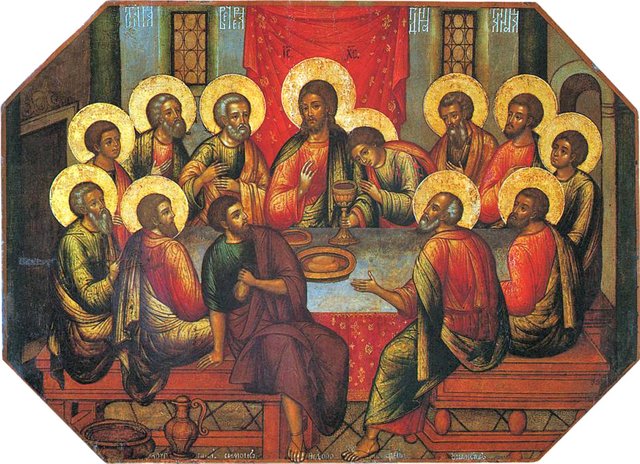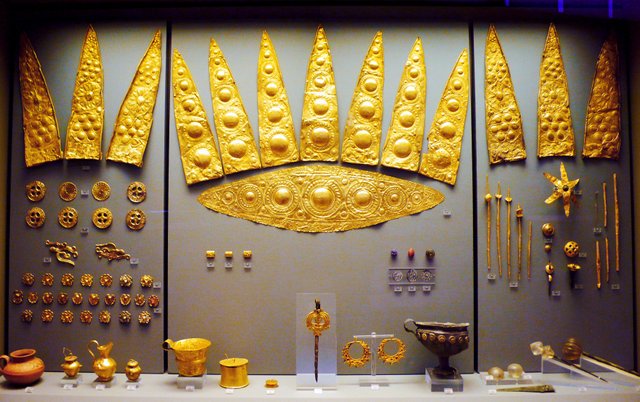Re-evaluating the Star of Bethlehem: Part 5: The mark of divine approval: "the glory of the Lord is risen upon thee" (featuring @vuyusile as author)
In this part we seek to understand the significance of the successive triple conjunctions with Jupiter on the one hand and Regulus and Zaniah respectively on the other.
Recall that between September 3BCE and May 2BCE Jupiter enacted retrograde motion above Regulus, causing a triple conjunction with the star, and by its path drawing a flattened disk, or mark of emphasis above the planet. A similar feature was evident above Zaniah between November 2BCE and July 1BCE.
We pointed out that this was a once-in-a-lifetime event; and that coupled with the simultaneous conjunction of Jupiter and Regulus in Leo, and Venus and Zaniah in Virgo, this interaction is perhaps unique in all human history.
Is there more to this than meets the eye?
Regulus and Zaniah
Regulus is the brightest star in the constellation Leo, and was well known as, “the little king”. Regulus shares the same root as the words “regulator” or “regulation”. Regulus, with its transliterated Latin name, was thus regarded as the little king, the regulator or lawgiver. And this is true of Babylonian view of the star. It is not difficult to see symbolic significance in interactions with this star.
Zaniah is, by all appearances, a minor star in the constellation of Virgo. It is not bright or arresting. However, it lies almost exactly on the ecliptic equator, like Regulus in Leo. Zaniah does not have a clear etymology. It appears to be derived from an Arabic name that may mean “corner” or sometimes “gate” (see https://en.wikipedia.org/wiki/Eta_Virginis) , or more poignantly, an angel of unknown name (see http://stars.astro.illinois.edu/sow/zaniah.html). It is difficult to be certain about the interpretation the Arabian astronomers gave to this star. But if it did have signification for an angel, it would be apposite, given the angelic attendances at and around the time of the birth of Christ.
The Chinese regarded the star as one of four stars in an asterism associated with the administration of the law, literally, “the left-hand administrator of the law”. However, just to the westward is the point of the autumnal equinox which the Chinese knew as Yih Mun, Twan Mun, or Tien Mun, Heaven's Gate (see http://www.constellationsofwords.com/stars/Zaniah.html ). The autumnal equinox in the northern hemisphere happens, at present on approximately 23 September each year. It is the moment the Sun crosses the celestial equator – the imaginary line in the sky above the Earth’s Equator – from north to south. Due to the precession of the equinoxes, it was occurring just after midnight on 26 September 3BCE. The idea of a gate also resonates with the Arabic name.
The phase “heaven’s gate” is not foreign to the Judaic tradition. Jacob, following his wrestle with the angel, and identifying the place under which he had slept, stated in Genesis 28:17, “surely this is the gate of heaven”. The Book of Enoch, also refers to the gate of heaven (See Enoch 9: 2, 11). In that instance the metaphor fittingly describes the portal through which the cries of the people ascend up from the earth and fall upon the ears of God.
Zaniah thus assumes a far greater symbolic importance in this stellar odyssey. Zaniah represents the gate of heaven, the portal through which man is connected with God; through which God hears the cries of man; and through which, as we shall see, God condescends with man. I emphasise that these are symbols.
Whatever the precise meaning to be given to the star Zaniah, both Zaniah and Regulus share an important feature in common. Both stars lie upon or close to the ecliptic and anchor their constellations within that important path. As a consequence, both are regarded as important to the constellations and are referred to as the “heart stars” of their respective constellations.
A short exegesis of a relevant passage of scripture.
The following quote from Isaiah 60: 1-3, is usually read figuratively in the context of the destiny of Zion.
“1. Arise, shine; for thy light is come, and the glory of the Lord is risen upon thee.
- For, behold, the darkness shall cover the earth, and gross darkness the people: but the Lord shall arise upon thee, and his glory shall be seen upon thee.
- And the gentiles shall come to thy light, and kings to the brightness of thy rising.”
Bible commentaries to be found at Biblehub.com all point to the glorious destiny of the city of Zion, the kingdom, the church; depicted here as resplendent and glistening, like the early morning dew in the glow of the sun. This glorious station is to be contrasted with the state of the world, darkness; and the state of the people, gross darkness.
However, in true Isaiah dualism, to my mind, this passage is first and foremost a literal prophecy pertaining to a star.
The text is a beautiful example of a literary device known as a chiasmus. It involves the repetition of a sequence of ideas in inverted order, with the reader’s attention being focused on the central or “pinnacle” idea. In this form of prose, the first and last ideas are similar, the second and second last, the third and third last, and so forth. This is demonstrated by labelling the lines with a letter to show the inversion, as follows:
(a) Arise, shine
(b) for thy light is come
(c) The glory of the Lord is risen upon thee
(d) The darkness [night] shall cover the earth
(d’) Gross darkness (shall cover) the people [apostasy]
(c’) The Lord shall arise upon thee and his glory shall be seen upon thee
(b’) Gentiles shall come to thy light
(a’) Kings to the brightness of thy rising
This chiasmus (See, inter alia, John W Welch, Chiasmus in Antiquity (1998)), focuses the reader on the darkness – the night – when something would arise (what else other than a star?), and be marked by the Lord’s Glory ascending upon it; and furthermore to which the gentile kings would come. The reference to gold and incense as gifts in verse 6 of this same chapter has also been mentioned as an allusion in the direction of the Magi. It is easy to see this scripture having reference to the events connected with the Star of Bethlehem.
However, the phrase suggests more, by its reference to the Lord arising upon the star (which is itself to arise and shine), and the Lord’s glory being displayed upon it.
This unique phrase, suggesting an aura of glory, draws powerfully upon the understanding of the symbol of a halo or divine anointing. The halo is a symbol that appears regularly in Christian artistic symbolism, as well as in Buddhist art.

Note how Judas Iscariot does not have the halo of approval.

According to EH Ramden, 1941, The Halo: A further Enquiry into its Origin (http://www.cais-soas.com/CAIS/Religions/iranian/Zarathushtrian/halo_its_origin.htm )
“Now, in view of the fact that the halo appears in both Buddhist and
in Christian art, … it seems reasonable to suppose that it was derived
by both from a common source, from an intermediate region… If this is
the case, then it is in Persia that its origin must be sought,… What
internal evidence exists, then, as to the origin of such a symbol?
Apparently much that might be considered conclusive if the halo can be
identified with the hvareno, as indeed it must if this theory is
correct. The word hvareno itself is derived from the same word as the
Persian word for sun, namely hvare, from which it becomes apparent
that the basis of the whole connection (between the halo and the
object haloed) is light, … As to the precise meaning of the term,
this is clearly set forth in the introduction to the Vendidad, where
it is said that ‘the hvareno is properly the light of sovereignty, the
glory from above, which makes the king and earthly god. He who
possesses it reigns. He who loses it falls.’” (emphasis added)
The presence of the halo is far more present in western iconography than simply when it is drawn above the head of the saint. While much art identifies those in favour of with God with a halo, and those without his favour as having none, perhaps the most obvious, and therefore most easily overlooked, depiction of a halo is in the feature of a crown.

This image of a Greek crown from circa 1550 BCE. Note the flattened disk and rays emanating; also the sceptres.
The crown is nothing less than a halo worn on the head of the king or queen, signifying the “light of sovereignty”. Given the once all powerful idea that the monarch was divine, it is the wearing of the crown that constitutes “the king an earthly god” or at least divinely anointed, and possessing the glory from above. It is no wonder that the objective in war was to capture the crown, given its rich symbolism and iconography.
It will not have escaped the attentive reader that Jupiter has, in the passage of its triple conjunction with each of Regulus and Zaniah, drawn a halo upon or above these two stars.
The halo over Regulus may thus signify the divine anointing of the lawgiver to come out of Jacob, no less than Shiloh himself.
The halo over Zaniah may signify the mark of approval over the gate of heaven, the portal through which condescension may occur.
Bearing this in mind, the unique and simultaneous conjunction between Jupiter and Regulus in Leo, and Venus and Zaniah in Virgo on 14 September 3BCE assumes greater significance: Following the announcement of the immanent Messiah, as depicted by the Jupiter/Venus conjunction on 12 August 3BCE, righteousness (Jupiter) sits upon its throne of law and dominion as the king of Jacob in Regulus, while light and truth (Venus) enters through the gateway of heaven to approach the royal throne.
This simultaneous conjunction of stars and planets is followed by the beautiful central conjunction in the middle of Leo between Jupiter and Venus on 17 June 2BCE. For the reasons that will be described in the next post, it is postulated that this conjunction signifies the conception or incarnation of Jesus Christ: the consummation of the journey of light and righteousness to the throne of God through the gate of heaven; the pair poetically meeting mid-way between the two heart stars of their respective constellations. For that consummation, the closeness of the appulse is especially significant.
I can offer a summary of the meaning of this evident symmetry:
- Three conjunctions between Jupiter and Venus while passing through
Leo and Virgo, signifying the connection between righteousness and
truth in this great mystery of relationship between God and Jacob and
God and the virgin. - Three conjunctions of Jupiter with Regulus in the course of drawing
the celestial halo above Regulus – signalling God’s approval of the new King of
Israel : “The glory of the Lord is risen upon thee.” - Three conjunctions of Jupiter with Zaniah in the course of drawing a
celestial halo over Zaniah, signalling divine approval for the connection, via
the virgin, through the gate of heaven, of God and man – underscoring
the condescension of God.
The beauty of the description in Isaiah 60 bears repeating with the understanding suggested in this post. It is a song of praise (and well did Handel set it to music in Messiah) in recognition of the Star of Bethlehem that would arise and shine at night, and which would beckon the Magi to the glorious brightness of its presentation as it bestowed the mark of divinity on the child to come.
“1. Arise, shine; for thy light is come, and the glory of the Lord is risen upon thee.
- For, behold, the darkness shall cover the earth, and gross darkness the people: but the Lord shall arise upon thee, and his glory shall be seen upon thee.
- And the gentiles shall come to thy light, and kings to the brightness of thy rising.”
Good job.
The chiasm is amazing, and the Hebrew scholars used it so well. For all its shortcoming in precision compared to Greek, some of the literary devices of Hebrew really were amazing - the cadence, the structure, parallelisms, chiasms and poetry sometimes blending in ways that are really quite complex.
I wonder if they grew up learning to use all these devices intuitively, or if it was a practiced skill.
Looking forward to the next one.
Ah! we blog to know we are not alone! You will appreciate the material available at this website then: http://chiasmusresources.johnwwelchresources.com/chiasmus-antiquity
It seems clear to me that it was a deliberate device and much practiced skill resulting in an almost intuitive product. Since I don’t read Hebrew, and am left with the English translations, it remains even more impressive that they are not lost in translation. Thanks for the encouragement!
Here's something you couldn't get from Is 60:1-3 without the Hebrew. I used to be able to read it, but have lost most of my ability. But I can still work with it decently.
The cadence is hard to get here, but you can see a chiasm in the sounds too. The letters in parentheses are the beginning sounds of the words in Hebrew. They're not exact, but with the cadence would have a similar sound. These numbers are in exact order they appear in the passage. And you can see that they mirror each other somewhat. (ch) is a gutteral "h", so almost a soft "k" sound. The italics letters are prefixes, having different meaning depending on construct and context. The most common is the waw (vav). Caveat - I'm out of practice and did this quickly, so it's prone to error. Anyway, just having some fun. :)
1 a - arise (q)
1b - shine (o)
1c - your light has come (b, o)
1d - glory of (u-k)
1e - YHWH (y)
1f - risen upon you (z)
2g - darkness cover earth (h-ch, y-k, e)
2g - thick darkness cover peoples (w-a, l)
2f - arise (y-z)
2e - YWHW upon you (y)
2d - glory will be seen (w-k, y-r)
3c - nations shall come to your light (h, g, l-o)
3b - kings to the brightness (w-m, l-n)
3a - of your rising (z)
Now you are blowing me away ! thanks for this enrichment!
lol, well, it took me way longer than it should have. But it was fun. :)
Your work with the stars is so far beyond my understanding that I can't even pretend to grasp it all. It's incredibly fascinating.
articulate piece, thanks
tks!
Very good post. thank you.
Thanks!
Interesting.
Is this the culmination of end times, as referred to in the bible under chapter Romans?
Please forgive me, I am not sure that I understand the question. What chapter in Romans are you referring to?